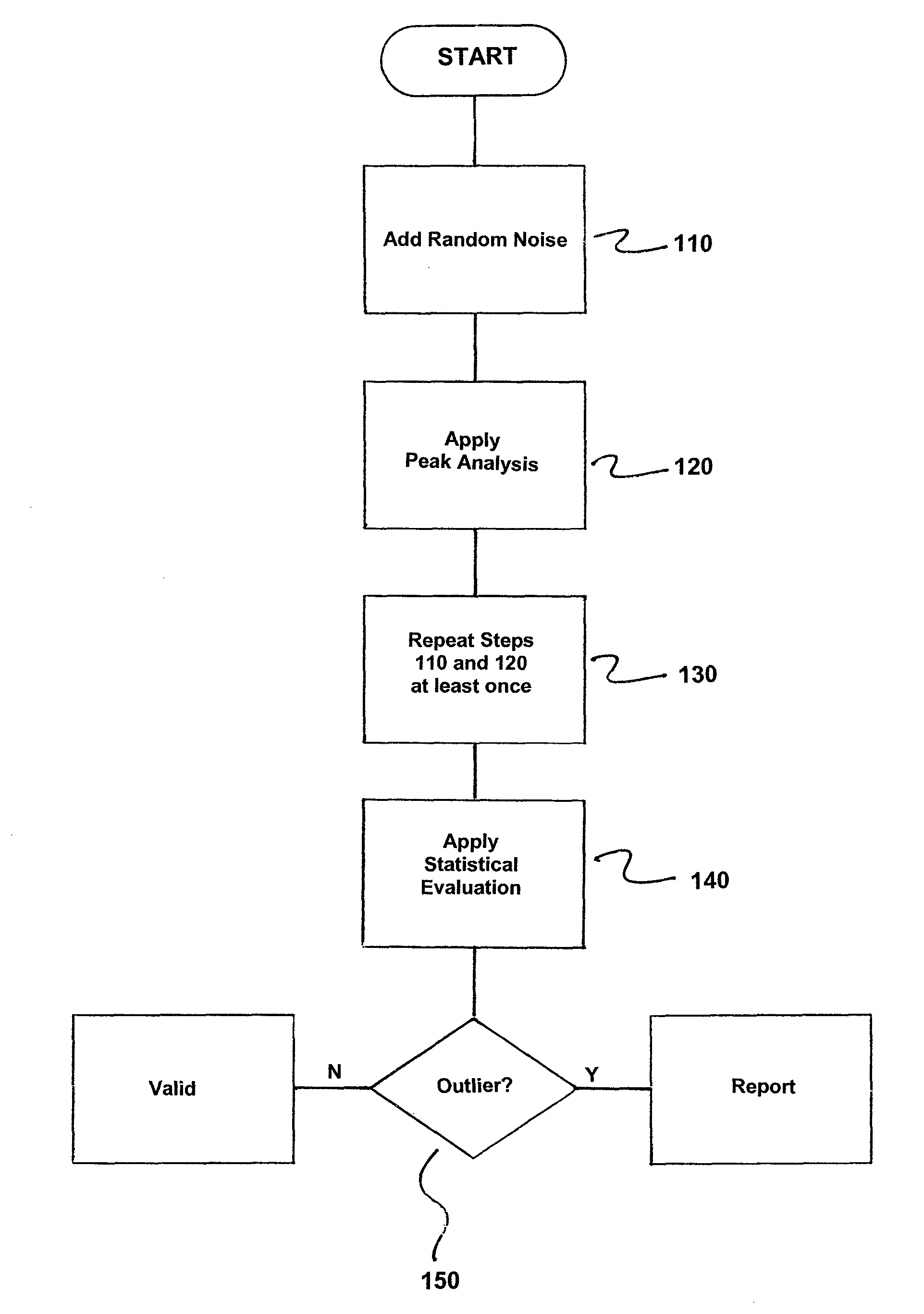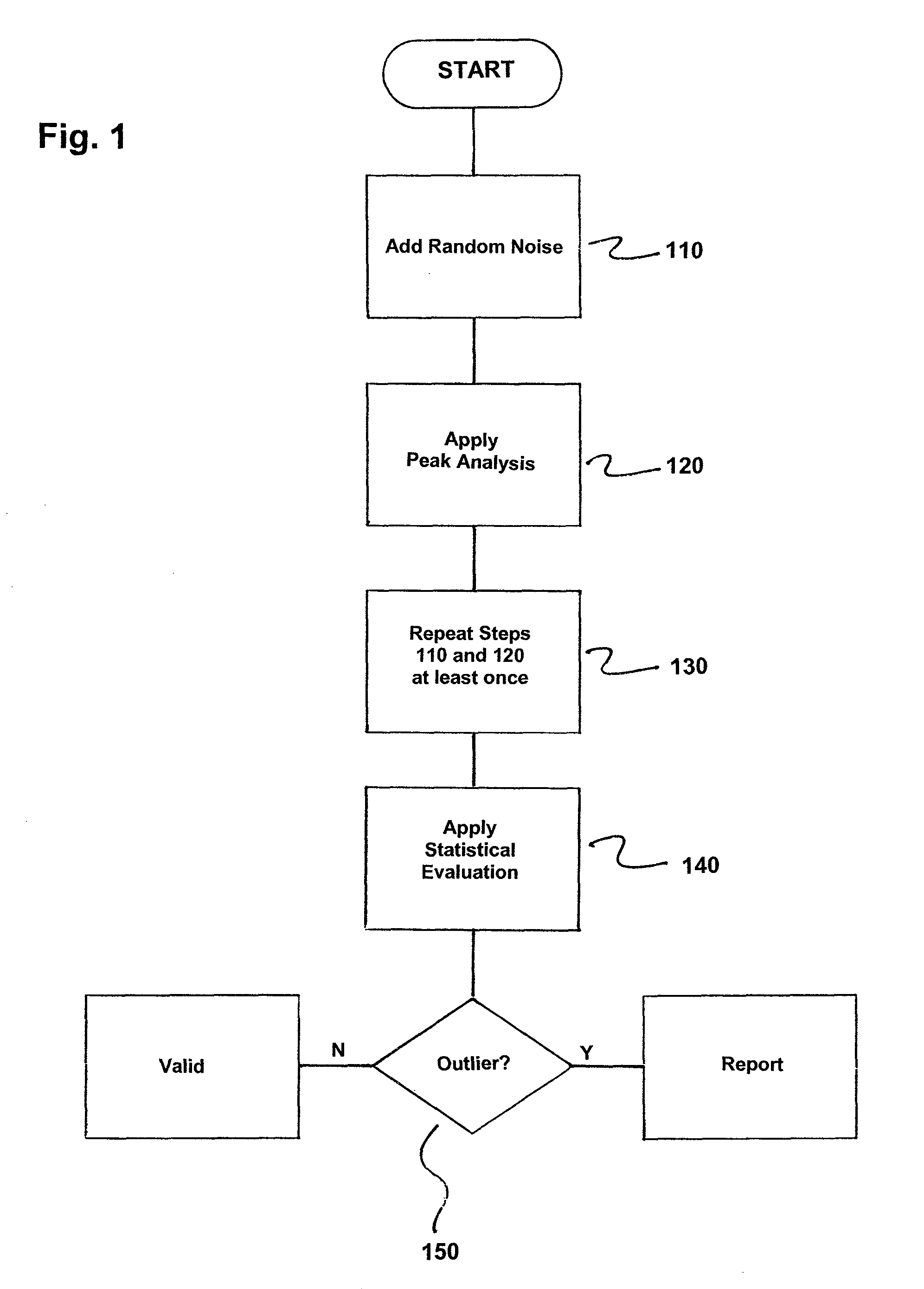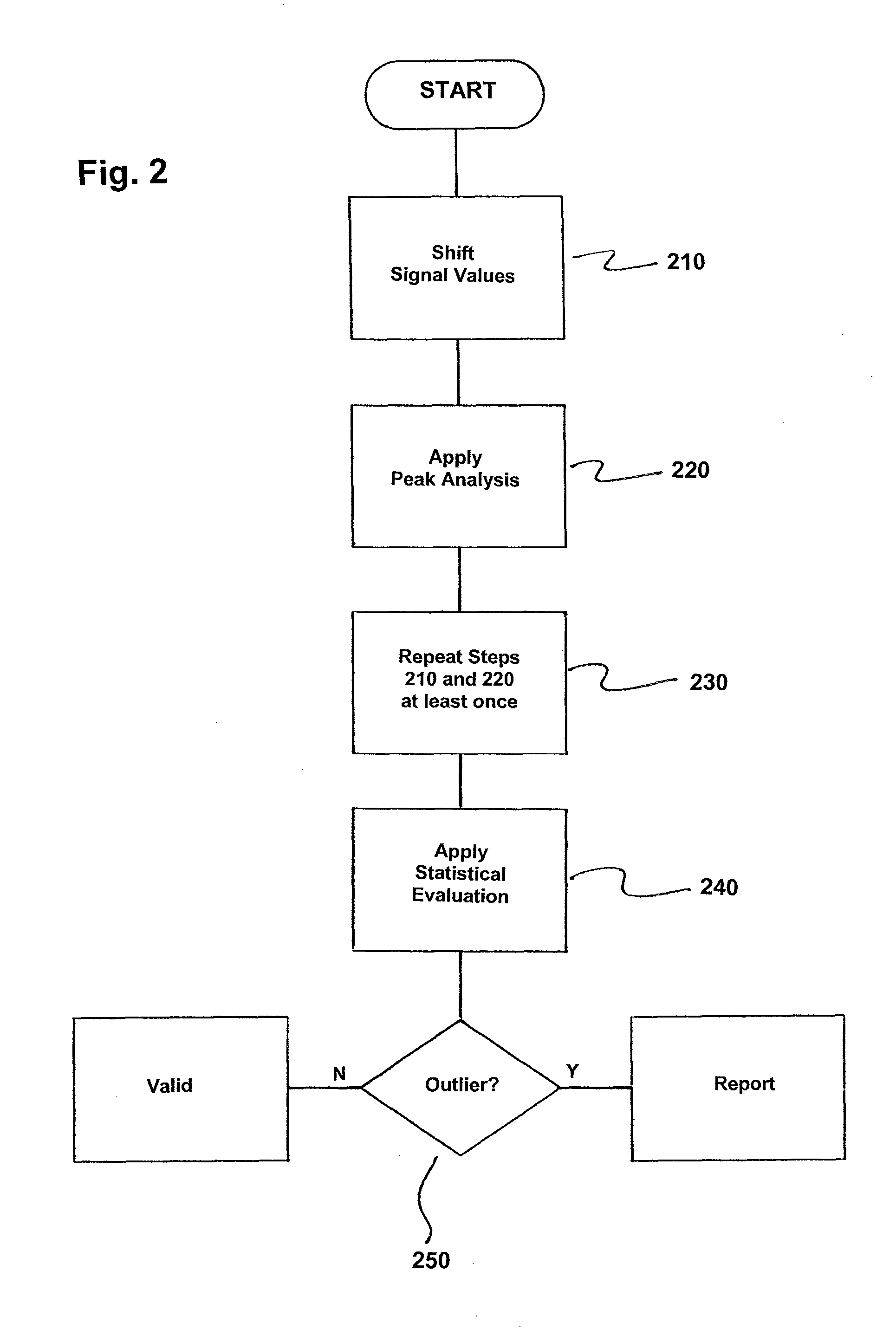Method for quantifying peaks in an analytical signal
a technology of analytical signals and quantification methods, applied in the field of quantification methods of analytical signals, can solve the problems of inability to accurately quantify analytes, inability to accurately predict the shape of real peaks, so as to facilitate optimization of peak quantification methods, reduce the chance of quantification errors occurring, and improve the robustness of process monitoring
- Summary
- Abstract
- Description
- Claims
- Application Information
AI Technical Summary
Benefits of technology
Problems solved by technology
Method used
Image
Examples
example ia
During Method Development
[0017]Step 1 Successive values of an analytical signal are acquired and recorded.
[0018]Step 2 A peak analysis methodology is applied to the recorded successive values of the analytical signal within an interval to quantify peaks in the analytical signal. Here, the interval may contain all signal values or only the signal values of a portion of interest of the recorded signal.
[0019]Step 3 Random noise is added to the recorded successive values of the analytical signal in the interval. The amount of noise may be similar to the signal-to-noise ratio (S / N) of the original signal, where the S / N may be estimated in Step 2.
[0020]Step 4 The peak analysis methodology is applied to random-noise-modified recorded successive signal values of the analytical signal of Step 3 to quantify peaks in the modified signal.
[0021]Step 5 Steps 3 and 4 are repeated at least once with different random noise added.
[0022]Step 6 A statistical evaluation methodology, such as Gubbs' test ...
example ib
During Unattended Runtime Quantification
[0025]Steps 1 to 5 are performed as described in Example Ia.
[0026]Step 6 A statistical evaluation methodology, such as Gubbs' test or Dixon's test, is applied to sets of peak quantification results obtained in Steps 2 and 4 to detect whether there is an outlier in the peak quantification results.
[0027](a) Peak quantification results from Step 2 are accepted as valid results if there is no outlier.
[0028](b) Peak quantification results from Step 2 are reported as valid, but a degree of certainty is reduced, if there is one outlier.
[0029](c) Peak quantification results from Step 2 are reported as invalid if there is more than one outlier.
PUM
 Login to View More
Login to View More Abstract
Description
Claims
Application Information
 Login to View More
Login to View More - R&D
- Intellectual Property
- Life Sciences
- Materials
- Tech Scout
- Unparalleled Data Quality
- Higher Quality Content
- 60% Fewer Hallucinations
Browse by: Latest US Patents, China's latest patents, Technical Efficacy Thesaurus, Application Domain, Technology Topic, Popular Technical Reports.
© 2025 PatSnap. All rights reserved.Legal|Privacy policy|Modern Slavery Act Transparency Statement|Sitemap|About US| Contact US: help@patsnap.com



